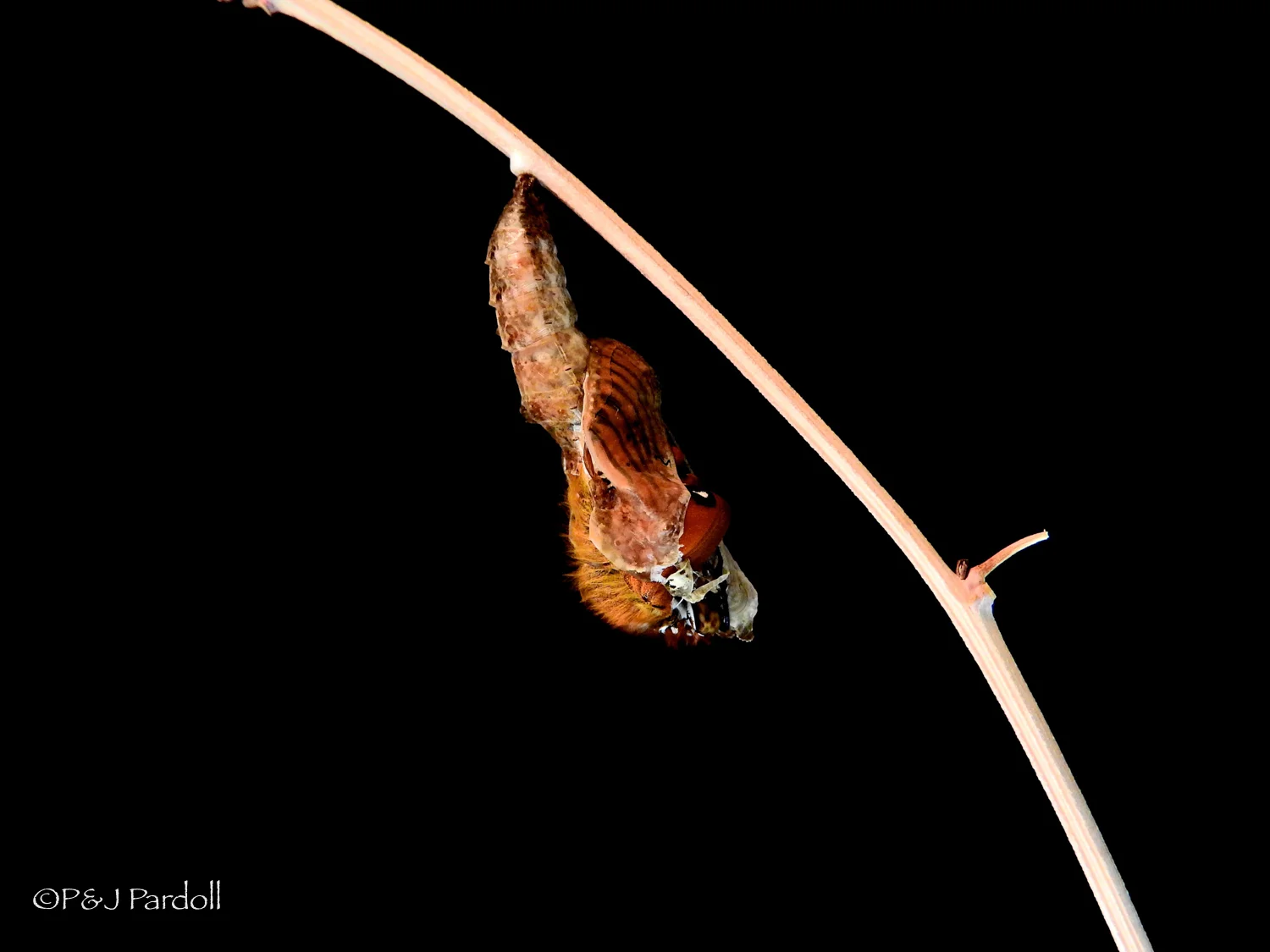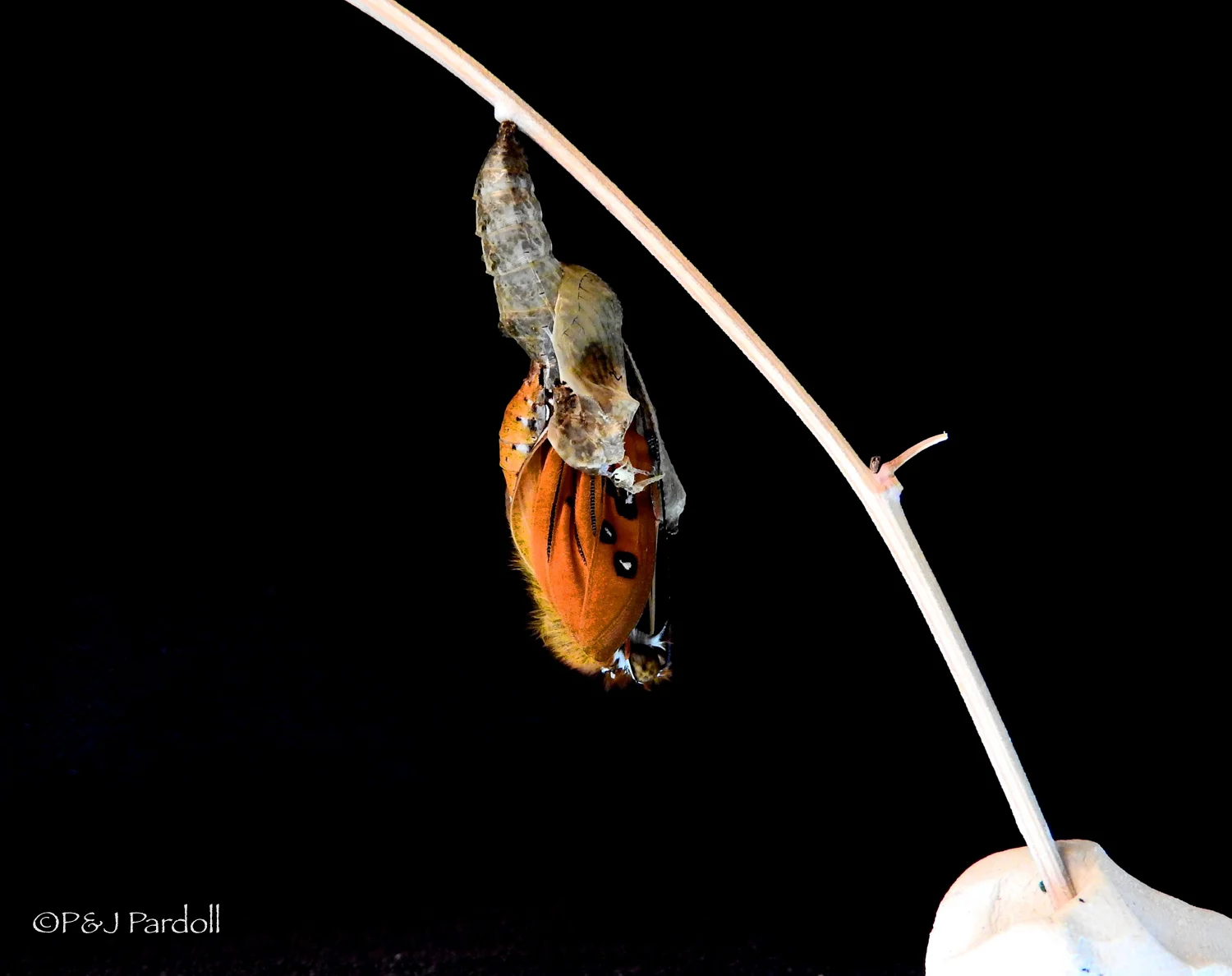The Gulf fritillary or passion butterfly (Agraulis vanillae) is a bright orange longwing butterfly most commonly found in southern areas of the United States. The butterfly is attracted to Lantana flowers for nectar and Passion flower vines for depositing their eggs. The Pardoll's put a Passion flower vine on their patio and they carefully monitor and photograph the butterfly's life cycle. The vine is eaten down to the bare earth but returns to full foliage each season to host another cycle of life for these butterflies.
The eggs are small and spherically shaped and laid one by one on the Passion flower vine. The average duration of the egg stage in the life cycle is three to five days depending on the temperature of the environment. Eggs are initially a white or cream color and turn brown during the first 24 hours.
A newly hatched caterpillar usually eats its egg casing and then starts to voraciously feed on the vine.
The larval, or caterpillar stage, usually lasts between 11 and 16 days.
When ready to create its chrysalis, the caterpillar turns a grayish color and begins to spin a silk-like substance into a ball on top or against a malleable surface. It then attaches its rear end to the "silk" lump and hangs upside down in a "j" position. By small contractions of the muscles it begins to shed its skin and head revealing a soft pinkish tan form. The soft form hardens and becomes grayish brown. The chrysalis stage lasts from 11 to 21 days.
When ready to emerge from its chrysalis, a small crack begins to form at the tip of the chrysalis revealing the butterfly's head. It continues to slowly move down through the bottom of the chrysalis until its legs are free to cling onto the shell of the chrysalis and pull itself the rest of the way out. It begins to pump the fluids from its bulging abdomen into its shriveled wings. When its wings are fully expanded it releases excess fluids from its abdomen. For the next ten to fifteen minutes it stays still and allows its wings to dry.
Topside view.



























